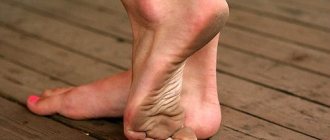The benefits of swimming
While swimming, a person trains the respiratory and nervous system, heart, blood vessels and muscles, while relieving stress and emotional stress:
- When swimming, almost all muscle groups work. Which of them bear more load depends on the chosen style. For example, if you swim breaststroke, you train your hips, buttocks, and calves. The crawl is a balance - the load is distributed evenly. Depending on which body systems need to be influenced, different styles can be used during the exercise.
- This sport develops the chest and lungs. Swimmers are good at running long distances - they are resilient. They can easily cope with cross-country and not “suffocate”. Swimming is a prevention of pneumonia and a good way to recover from coronavirus. After all, the lungs are constantly training. This means they are able to resist diseases.
- In the process of swimming, flexibility develops. During training in the water you have to perform strokes, dives, and flips. The muscles stretch, the body becomes elastic.
- Joints and spine are strengthened. Swimming is the prevention of scoliosis, coxarthrosis and a number of other diseases of the back, including the lumbar region of the body, the musculoskeletal system, and the hip joints. In water, muscles both relax and strengthen. A reliable “corset” is formed, which prevents the vertebrae from shifting and the joints from becoming “loose.”
- Coordination and mobility develop. A body of water - a pool or the sea - is not space, but you can swim in different directions - on and under the water. The body constantly has to focus on how it is located in space.
- The psychological state improves. Visiting the swimming pool is also a method of dealing with stress. Water has a tactile effect on the body, calms it, and a signal of relaxation is transmitted to the brain.
- The restoration of muscles and joints is activated. With the help of a swimming pool you can recover from injuries. Swimming is not contraindicated even for disabled people. The water supports the body, there are no shock loads, but the muscles still tense. The recovery process is gradually underway.
- Swimming burns a large amount of calories. By doing this sport, you can lose weight.
There are many advantages. There are contraindications. They will be discussed further. For now, let’s dwell on the advantages of swimming for children, women and men.
For men
It is believed that men are most susceptible to developing cardiovascular diseases; they often have problems with blood pressure. Swimming helps to cope with this. The muscles work, the lungs are filled with oxygen, the blood circulates quickly, saturating the organs and tissues with useful substances and removing harmful substances from the body. Heart function and overall well-being improves.
Men are more likely than women to engage in sports that are dangerous in terms of injuries: hockey, martial arts, weightlifting. As stated, swimming is a useful activity for restoring the body: muscles, joints.
Swimmers have a beautiful body with a sculpted, toned stomach. You don’t even need to swing, just spend an hour in the pool three times a week. Swimming is already a workout.
Swimming helps to cope with purely male problems. We are talking about prostatitis, potency, etc. When the body is in water, it is massaged, which has a positive effect on the prostate gland of an adult man. Movement is also the prevention of prostatitis. And in the pool you won’t be able to “stand” in one place. Older men are advised to set aside time for swimming. After 50 years, as a rule, testosterone levels decrease, weakness appears, and the belly begins to grow. It's time to sign up for the pool to get yourself in order.
For women
Girls are usually most concerned about the problem of obesity and increased body weight. The pool helps solve it. The results will be noticeable after the first few workouts.
Even slender girls are recommended to go swimming, because participation in such sports contributes not only to weight loss. It is important that training in water allows you to keep the weights in the desired range. Losing extra pounds is not that difficult. The usefulness of swimming is that it helps keep the scales on the same numbers. Fat is lost in the process and calories are burned. And muscle mass increases. It can be adjusted. Let's list a few more advantages of swimming:
- Skin tightening. When a person swims, the body is massaged. This makes the epidermis elastic and beautiful.
- Fighting stress. It is believed that women are more susceptible to negative emotions. Exercising in water distracts you from bad thoughts, giving you positive energy.
- Getting rid of varicose veins. The female body is most susceptible to problems with veins. For prevention, you should go for a swim. Water massage improves blood circulation in the limbs. If you stay in the pool for 60-90 minutes three times a week, then the problem will not appear.
- Stimulation of the female genitourinary system. It is saturated with blood and, accordingly, oxygen. This is the prevention of diseases and improvement of reproductive function.
And there are contraindications for women. They will be discussed separately.
For children
The question immediately arises about how old a child must be before he can be taken to the pool. Pediatricians and sports trainers say that a baby can be put into water almost from birth. Babies are like dolphins. Nature itself teaches them to swim. From infancy, a child can flop around like a frog. This is still typical for a three-month-old human. As the baby gets older, he “forgets how” to swim. There's no point in leaving the pool. It will be necessary to develop a skill that is not associated with innate reflexes.
Preschoolers can master the basics and train individual elements. Classes should take place in the form of a game. When a child has left preschool age, he can be truly trained to work and strive for records. School-age children participate in competitions and then grow into adult champions.
However, swimming is not always about records. You can swim for pleasure and for health purposes. Teenagers like to go to the pool in groups when it is not possible to dive in open water - during the cold season. Therefore, there is no need to consider swimming solely as a sport. This is a hobby that improves your health and improves your mood.
The problem is that not everywhere there are places for swimming with kids. There are plenty of children's pools in cities. But they set age restrictions - few people want to work with infants. For example, it is difficult to go swimming with a toddler who is under 3 years old. Only large cities have such services.
Children are recommended to swim for the following reasons:
- Strengthening the immune system. In water, the body develops and develops the ability to resist viruses and bacteria. It is in childhood that you need to start strengthening your immune system. The earlier the better.
- Prevention of diseases of the musculoskeletal system. The swimming pool is an indication for people who have back problems. Scoliosis often develops in childhood. Because of riding a bicycle, playing computer games, sitting at a desk for a long time.
- Solution to sleep problems. Children have a lot of strength and energy, not like an adult; it is not always possible to waste it all during the day. Guys sometimes don't sleep well. The solution to the problem is simple: you need to enroll your son or daughter in the pool. Experience shows that after swimming, children fall asleep better. Swimming provides a large but gentle load on the muscles.
- Appetite stimulation. Children often eat poorly and go overboard with food. During training, a lot of calories are consumed, and eating behavior improves.
Swimming is beneficial for women, men and children. If there are no contraindications.
Swimming pool after workout
During intense exercise, the muscles work a lot and become very tense. This is work for the sake of a developed body. But there should be a time and place for relaxation. Good options:
- pool;
- sauna.
All this is available at the La Salute fitness club. Here, experienced instructors are always happy to help beginners master the basics of swimming and introduce children and adults to different styles.
Background
I started swimming more or less seriously about six months ago.
“Seriously” means I decided to learn how to do it correctly. Before that, I swam mostly breaststroke, and even then, I was self-taught. That's how I ended up in the club. Everything was going well and progress was quite fast. I completed the basic course, the cards started and ended, and the advanced cards started. A gradual increase in distance began: 100 m, 200 m, etc. Somewhere in the middle of the basic level, the first conversations about a trip to open water began. To Dahab or Greece. Dahab was not interesting to me, since I had already been there a hundred times, which is probably why my thoughts revolved around Greece. This thought was new, unexpected and somewhat exciting. When I tried to catch this thought, press it against the glass and look more closely, I realized that it frightened me more than it attracted me. Extrapolating my feelings in the pool to the sea, I felt that I was not ready and that it would be a complete extreme and unpleasant struggle for life. And I couldn't find any logical explanation to the contrary.
It was not clear to me:
- How can I swim for kilometers in the sea if I experience persistent discomfort after 100 m in the pool?
- how to swim among the waves, because in the pool even a wave from a colleague swimming past sometimes floods you as you inhale
- what to do if you take a sip of water or are just tired. No side, no path
- what to do at a depth where you can’t see the bottom. It always tickled my nerves
- How can I even think about this seriously at my level?
In short, I felt that in my case it was just a gamble. And that the coaches will be upset when they see this.
However, my attempts to explain this to coaches constantly ran into the same strange arguments like:
- With two more months to go, you'll be more than ready.
- It's easier to swim in the sea
- the sea spurs progress
- the sea leaves no one indifferent, etc.
All this made me distrustful. I tumbled in the sea for many years (windsurfing, kite), and I know what it is... I could only agree with the last point, about non-indifference.
Apparently, such an attitude is rare among our swimmers. A month and a half before our trip, the guys left for Dahab, and, as far as I saw, no one had such doubts and everyone went with pleasure. At least it seemed so to me. Or maybe people like me just didn’t go in silence? Then this story will help them make different choices next time.
Contraindications and harm
Unfortunately, swimming in the pool can be harmful. Consider the potential negative impact:
- Possibility of being harmed due to poor water quality. Not all fitness centers use advanced cleaning systems, such as ozonation and ultraviolet treatment. Many people still use bleach. The substance is safe in small concentrations. But if there is a lot of it, then vision, breathing, and other body systems suffer.
- A common harmful factor is the risk of contracting a fungus. This is difficult to prevent. It is necessary to choose a good place for swimming, where the sanitary and epidemiological situation is closely monitored.
- The influence of too active a start. Many people sometimes begin to swim so zealously that they overload an unprepared body. This harms muscles and joints. You need to listen carefully to the trainer, increase the load gradually so that there are no negative consequences.
It is believed that by swimming, women can acquire a masculine figure: broad shoulders, narrow hips. This is typical only for professional swimmers. A few more contraindications for frequent use of the pool:
- infectious diseases;
- chronic health problems;
- skin disorders;
- increased body temperature;
- high fatigue;
- tuberculosis;
- diseases of the dermis;
- allergies - in some cases.
Separately, we note pregnancy and heart pathologies. It was stated above that swimming strengthens blood vessels and the muscle that pumps blood through itself. Heart disease is a contraindication if the doctor has prohibited exercise. The same applies to the spine, if there is a hernia, for example. Pregnant women can swim in the absence of pathologies.
In each specific case, the doctor must give permission to practice. Menstruation is not a contraindication. But it’s better not to go to training for the first days, and then you can use tampons. However, everything is individual.
Why is the correct microclimate temperature in bathing areas so important?
People visit swimming pools for different reasons. Someone wants to get rid of excess weight with the help of water gymnastics. Many people go to the pool for wellness treatments and to keep their body muscles toned. And some people just like to swim and splash in the water.
But, no matter what goals the pool visitors pursue, the main task of the labor staff of sports and entertainment complexes is to provide swimmers with comfort and safety. Therefore, pool workers are required to carefully monitor not only that the water temperature meets accepted standards, but also the climate of the bathing area as a whole.
Regardless of the type of pool, the air temperature in the room should always be 2-3 degrees higher than the water temperature. Indoor indicators such as humidity and air ventilation are also important. In order for swimmers to feel comfortable during swimming lessons, the optimal humidity in the gym should be in the range of 55-65%. As for the air circulation speed, 0.15-0.3 m/s is considered the norm.
What are the dangers for a person of non-compliance with the temperature regime of water and air:
- if the water is colder than the accepted norm, this can lead to hypothermia and the occurrence of colds;
- when swimming in cold water there is also a risk of cramps, spasms and numbness of the body muscles;
- swimming in too warm water will cause the body to overheat;
- Another danger of a warmer water environment is that pathogenic viruses and bacteria begin to multiply intensively in it;
- with increased air humidity, a swimmer may experience a lack of oxygen, which can lead to loss of consciousness and even prolonged fainting;
- also, high humidity in the room contributes to the evaporation of disinfectants from the water, causing a person to feel suffocated, which is especially dangerous for allergy sufferers and people suffering from asthma;
- if the air speed in the gym is higher than normal, this leads to drafts, as a result of which the swimmer can catch a cold.
Do not risk your health and do not hesitate to check with the pool worker about the temperature of the water and air in the room before water procedures.
Where to train
It is very important to choose the right pool. If you choose the wrong place, you won’t have fun, you’ll waste time, and in the worst case, you’ll catch an illness. The likelihood of contracting a fungus was mentioned above. The degree of compliance with sanitary and epidemiological standards must be taken into account. It’s good if the doctor at the pool requires a certificate of admission to visit the establishment. But this is not the only thing to consider. Some tips:
- Find out where there are swimming pools in your community.
- Find out if they are free to visit. For example, there are places only for students of a particular university and you cannot get there from the outside.
- Sign up for trial classes and evaluate everything on the spot: water quality, condition of the locker rooms, additional services - the presence of a sauna, a buffet. All the little things matter.
- Please note: the cost of visiting - there is no point in spending a lot, given the general equality, working hours - for some it is more convenient to study early in the morning, for others - late in the evening. You also need to evaluate the size of the pool. When there is no goal to break records, then, for example, 50 meters will be enough.
- Talk to a trainer if you plan to train individually. Read reviews about it. Ask about the instructor from those who are already training with him.
Our center offers individual lessons. Professionals help beginners get comfortable and achieve the desired results and goals.
How to swim?
A swimming instructor helps assess your skills and capabilities and determines the optimal load for your lessons. The specialist talks about the importance of warming up, breathing and techniques, and gives advice on them.
Breath
To prevent water from entering the nasopharynx, breathe correctly. For any face-down swimming technique, inhale above the surface of the water, and exhale only when you lower your head under the water.
Warm-up
An active warm-up before swimming prepares the muscles and ligaments for work, and puts you in the right mood. It includes a set of exercises performed in water. Thanks to the warm-up, breathing skills and holding the body on the water are honed.
Swimming technique
There are several basic swimming techniques in the pool:
- Crawl is a swimming style in which each arm alternates strokes and uses scissor-like movements with the legs. In this case, the head turns to inhale on the side in both directions on a count of 2-3. When practicing the technique, it is important not to hold your breath or fuss. You can swim on your front or back in crawl. The versatility of the style and the execution of movements on an intuitive level allows it to be used by children and adults. You can learn more about this technique in the following video:
- Breaststroke is a swimming style that involves synchronized throwing of the arms and legs for the stroke and push (“frog-like”). This technique is considered more complex than the crawl, but less energy-consuming. Breaststroke is often practiced by the fair sex during leisurely swimming on a seaside holiday. But at the same time they make the grave mistake of keeping their heads above the surface of the water. This cannot be done. The head should be in line with the spine. How to swim breaststroke correctly, watch the video:
- The butterfly technique is reminiscent of how a dolphin moves in the water - sharp strokes with both hands and synchronized movements of the legs, similar to wagging the tail fin. The most difficult swimming style, having mastered it, you will be able to move easily and quickly in the water and feel like an amphibian. Butterfly is not recommended for beginners and children without training, as well as for people with serious problems in the upper shoulder girdle. The butterfly technique is clearly shown in the video below:
If the purpose of visiting the pool is to strengthen muscles, lose weight, harden the body and increase endurance, then measured swimming and splashing in the water are not suitable. To engage the entire muscular system, move actively using different swimming styles:
- pumping the muscles of the back and shoulders is possible when swimming on the back or using the butterfly technique;
- the development of the muscles of the hips, buttocks, shoulder girdle and back is a consequence of the use of the crawl;
- The breaststroke swimming technique uses almost all the muscles of the body.
The instructor will introduce you to the nuances of styles and the correct technique for moving arms and legs. Under his guidance, master all the styles and then build your own workouts in the pool.
Practicing movements
Learning to swim is not difficult. To do this you need to work out:
- holding the body on the surface of the water;
- dive;
- hand movements;
- leg movements.
There are 2 main ways to move your legs:
- Wading is a technique where the feet make whipping movements in the water without bending the knees. Similar movements are produced when swimming with fins.
- Pushes involve spreading the legs in such a way that a right angle is formed between the lower leg and the thigh, and the feet describe a semicircle when returning the legs to a straight position. A similar technique is used when frogs swim.
Practicing hand movements does not cause difficulties, as it is performed on a subconscious intuitive level. Represents rowing with both hands simultaneously or alternately.
Who is recommended to use the pool?
This group can include several categories of people. Swimming is beneficial:
- For those who want to bring their body back to normal, lose weight, get fit.
- People who have back problems, such as spinal curvature.
- Pregnant women to relieve tone and reduce the negative effects of toxicosis. Let us repeat that expectant mothers are not only not prohibited from swimming, but are also advised to do so.
- For men to prevent prostatitis and increase potency.
- For those who are tired and want to improve their mood. During swimming, endorphins are produced.
- People with gastrointestinal diseases, if the doctor does not object.
Emotions while swimming in the pool
Experiencing the joyful sensations of swimming means excessive zeal in household chores. The dream book advises you to forget about everyday worries for a while and take a rest. Feeling that being in the pool causes discomfort means separation from a good friend. This will be due to his long absence due to a business trip or departure to another country for family reasons.
The fear of diving into the pool is nothing more than a sign of self-doubt and complexes. You had many opportunities to prove yourself in different fields, but you ignored them. The dream pushes you to take decisive action. Being afraid to get into dirty water means suspiciousness. You worry too much about everything and don’t let people get close to you. Remember that not all people are bad and wish you harm.
What muscle groups are affected by exercise?
It all depends on the chosen style:
- Breaststroke - quadriceps, gluteal and calf muscles, hip adductors, abdominal muscles: transverse and oblique, deltoid muscles of the shoulders, latissimus dorsi, pectoralis major, foot muscles.
- Front crawl – deltoids, back, triceps and biceps, gluteus maximus, calves.
- Back crawl – forearms, biceps and triceps, calves, gluteus maximus.
- Butterfly – back muscles, abdominal muscles, pectoralis major, quadriceps femoris and others.
There are differences, but there are also overlaps. Therefore, we can say this - it doesn’t matter what style you have, the main thing is to practice regularly.
latest comments
- 8-Aug-2020 Manzura I dreamed of a huge pool, a famous actor swims there, and I look at him with admiration, why this dream is interesting.
- 12-May-2018 Zarema In a dream, she swam with her husband in a pool with clean water. What is it for?
- 1-Dec-2017 Dinara I had a dream that I was swimming in the pool with a stranger, although I have a husband. Then I dreamed of a stranger’s man with a little boy, and we get on the train, and there my daughter is waiting for me, why this dream?
Say something:
Click to cancel reply.
How many calories does swimming burn?
Depending on the chosen style and gender of the swimmer, there are differences:
- men: breaststroke and freestyle – 700 kcal per hour, butterfly – 780 kcal, backstroke – 750 kcal;
- women: breaststroke, freestyle and butterfly - 500 kcal, backstroke - 600 kcal per 1 hour of training.
These are averages. In a particular case they may be higher or lower. It turns out that swimming requires more energy than many other sports. For example, yoga takes only 200 kcal per hour.
Luck, harmony in relationships
To dream that the water where you swim is clear and blue means, according to the dream book: capricious Fortune will help you realize your cherished desire. The dreamer will implement the most daring projects, promising ideas, thanks to which it will be possible to achieve financial independence and prosperity.
Why dream of swimming in a pool where the water is warm? The dream book suggests: this is the personification of a relationship with a soulmate. The dream foreshadows the achievement of harmony, a new level of feelings.
Did you dream of swimming in a pool with clear water and having a lot of fun? This is a reflection of real life: the sleeper has achieved inner harmony. In addition, he will be successful with those around him, and will always be able to count on the support of his friends.
How often to go to the pool
It all depends on your goals. Professionals train every day. If you do not want to win medals, then it is enough to visit the pool 2-3 times a week. This is 80 – 120 times a year. You don't need to swim for a long time. An hour a day is enough. If you don’t have time, then you should devote at least 30 minutes to training. There is no need to spend several hours in water, otherwise the disadvantages mentioned above may arise.
Beginners should start small - 10-15 minutes. You must follow the trainer's recommendations.
SWIMMING AND HEALTH
What I would like to say in conclusion... I am deeply convinced that swimming brings great benefits to a person, regardless of gender and age. A man or a woman, a child or an elderly person, if he swims, he will feel the beneficial effects of active movement in the water.
Although I learned to swim in early childhood, I spent most of my life without such a magnificent form of recreation as exercise in the pool, and only recently have I experienced the effectiveness of such exercise.
I think that 70% of my recovery, after I lost my health some time ago, is the result of visiting the pool. Therefore, let me give you some recommendations:
- If you don’t know how to swim yet, then don’t put this necessary skill on the back burner. Don't wait for Monday, start studying right now.
- Even if you are haunted by any illness, do not allow yourself to ignore movement in the water. Water is a great healing force and can do a lot.
- When swimming, follow the established rules of behavior in the pool and choose a level of stress that matches your physical and emotional state at a given time.
- By exercising regularly for 30-45 minutes, twice a week, you will feel an improvement in your condition within a couple of months.
- Do not swim on an empty stomach, and after visiting the pool, try to refrain from eating for 1 hour.
- The water temperature in the pools is maintained at 26-29 degrees, but if you are not used to this temperature and feel that you are cold, then it is better to get out of the water for a while and do a few energetic movements “on the shore” (arm swings, squats).
- To restore the range of motion after injuries to the lower extremities, fins are very helpful. Holding the side with your hands, you need to make gentle strokes with your feet in the water.
- Swim, swim and swim again, and believe me, your body will thank you more than once!
Well, all I can do is wish all readers “easy water” and good health and hope that I will see you again on the pages of my diary. All the best! Your Ken Shin.










